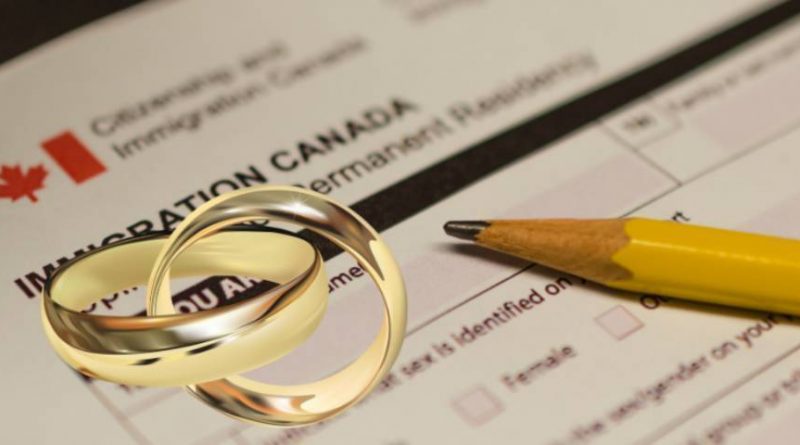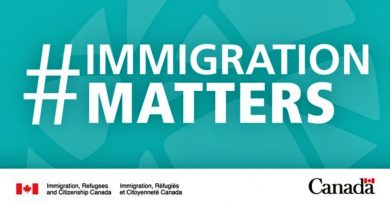Spouse Sponsorship: Assessing a Common-law Relationship
In the case of a common-law partner, documentary evidence should include:
- a completed Relationship Information and Sponsorship Evaluation questionnaire (IMM 5532) (included in the application package)
- proof of separation from a former spouse if either the sponsor or the applicant were previously married
- a completed Statutory Declaration of Severance of Common-law Union form (IMM 5519) if either the sponsor or the applicant were previously in a common-law relationship with someone else
- if the principal applicant and sponsor have children in common, long-form birth certificates or adoption records listing the names of both parents
- photos of the sponsor and principal applicant showing they are in a conjugal relationship
- at least two of the following sets of documents. If the sponsor and principal applicant are unable to provide documents from a minimum of two of the following sets of documents, a detailed written explanation must be provided:
- important documents for the principal applicant and sponsor showing they are recognized as each other’s common-law partner (such as employment or insurance benefits)
- documentary evidence of financial support between the principal applicant and sponsor, and/or shared expenses
- other proof that the relationship is recognized by friends and/or family (e.g. letters from friends/family, social medical information showing a public relationship)
If the sponsor and principal applicant are currently cohabitating, evidence from at least two of the following sets of documents showing that the principal applicant and sponsor have been living together for at least one year (e.g. documents showing the same address for both). If they are unable to provide documents from a minimum of two of the following sets of documents, a detailed written explanation must be provided:
- proof of joint ownership of residential property
- rental agreement showing both the sponsor and principal applicant as occupants of a rental property
- proof of joint utility accounts (e.g. electricity, gas, telephone, Internet), joint credit card accounts, or joint bank accounts
- vehicle insurance showing that both the principal applicant and sponsor have been declared to the insurance company as residents of the insured’s address.
- copies of government-issued documents for the principal applicant and sponsor showing the same address (e.g. driver’s licenses)
- other documents issued to the principal applicant and sponsor showing the same address, whether the accounts are held jointly or not (e.g. cellphone bills, pay stubs, tax forms, bank or credit card statements, insurance policies)
If the sponsor and principal applicant are not currently cohabitating, evidence must be provided that shows the sponsor and principal applicant cohabitated for a minimum of one year in the past, and the following must also be provided:
- proof of contact, including letters, printed text messages, emails or social media conversations, or other documented proof of contact between the principal applicant and sponsor. A maximum of 10 pages should be provided
- proof of the sponsor’s visits, such as airline ticket coupons or used boarding passes, photocopies of pages of passport for your sponsor showing entry-exit stamps supporting visits, etc. If the sponsor did not visit the principal applicant, an explanation must be included in the principal applicant’s IMM 5532 form (Part C, question 4)
Evidences for Co-habitation:
What is cohabitation?
Cohabitation means living together. Two people who are cohabiting have combined their affairs and set up their household together in one dwelling. To be considered common-law partners, they must have cohabited for at least one year. This is the standard definition used across the federal government. It means continuous cohabitation for one year, not intermittent cohabitation adding up to one year. The continuous nature of the cohabitation is a universal understanding based on case law.
While cohabitation means living together continuously, from time to time, one or the other partner may have left the home for work or business travel, family obligations, and so on. The separation must be temporary and short.
One of the eligibility criteria in R124 is cohabitation with the sponsor in Canada. Documents provided as proof of the relationship should also establish that the spouse or common-law partner and the sponsor are living together. If this is not clear from the evidence available, CPC-M should request further documents or refer to a IRCC for an interview.
Evidence of cohabitation may include:
- joint bank accounts or credit cards
- joint ownership of residential property
- joint residential leases
- joint rental receipts
- joint utilities accounts (electricity, gas, telephone)
- joint management of household expenditures
- evidence of joint purchases, especially for household items
- correspondence addressed to either or both parties at the same address
- important documents of both parties showing the same address, for example, identification documents, driver’s licenses, insurance policies
- shared responsibility for household management, household chores
- children of one or both partners are residing with the couple
- record of telephone calls
Persons who are not cohabiting with their sponsor at the time IRCC seeks to grant permanent residence (persons who have been removed or who have left Canada voluntarily) are not eligible under the Spouse or common-law partner class. They may, however, seek to apply in the family class (overseas), which would require them to submit a new application.





